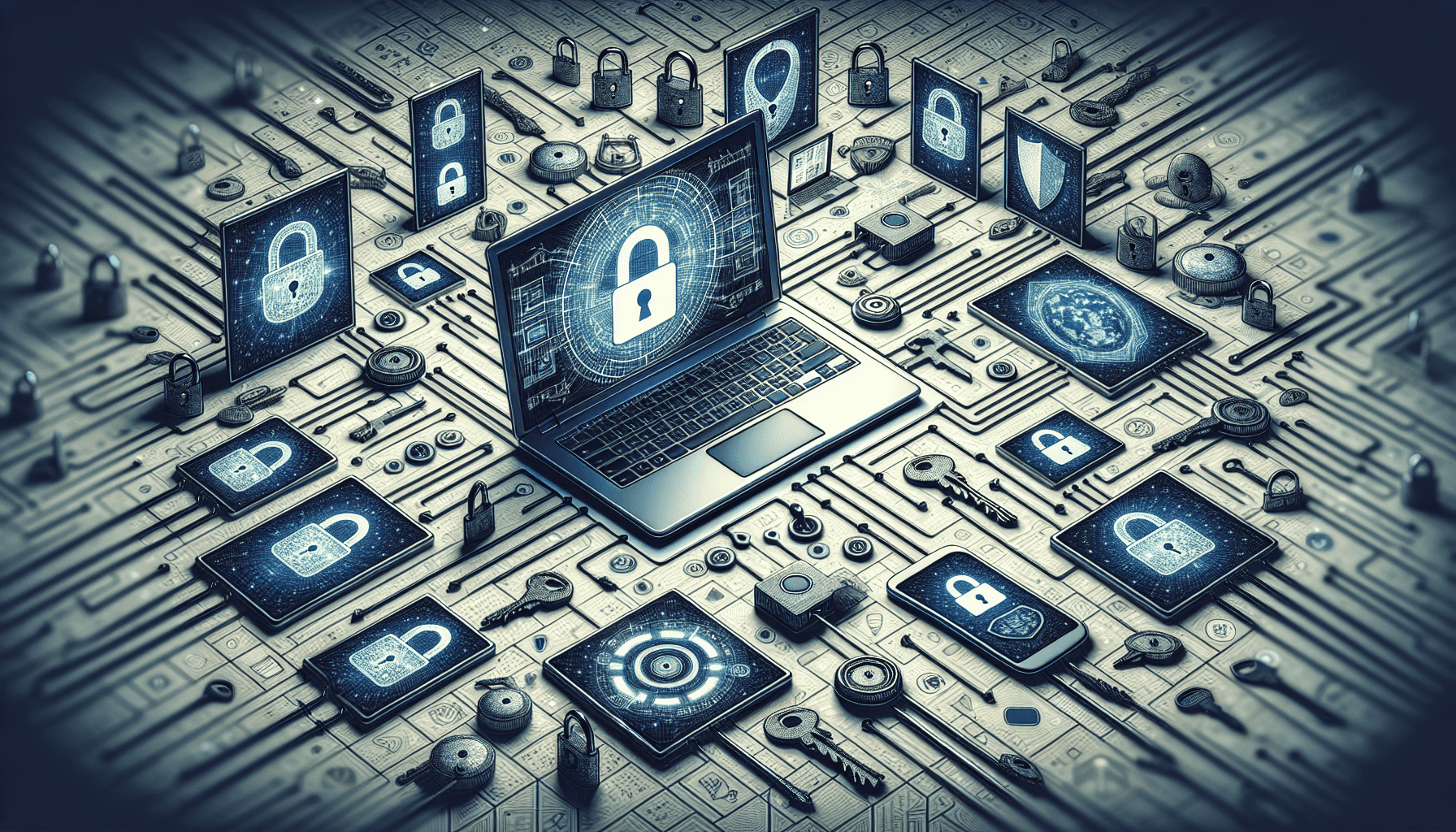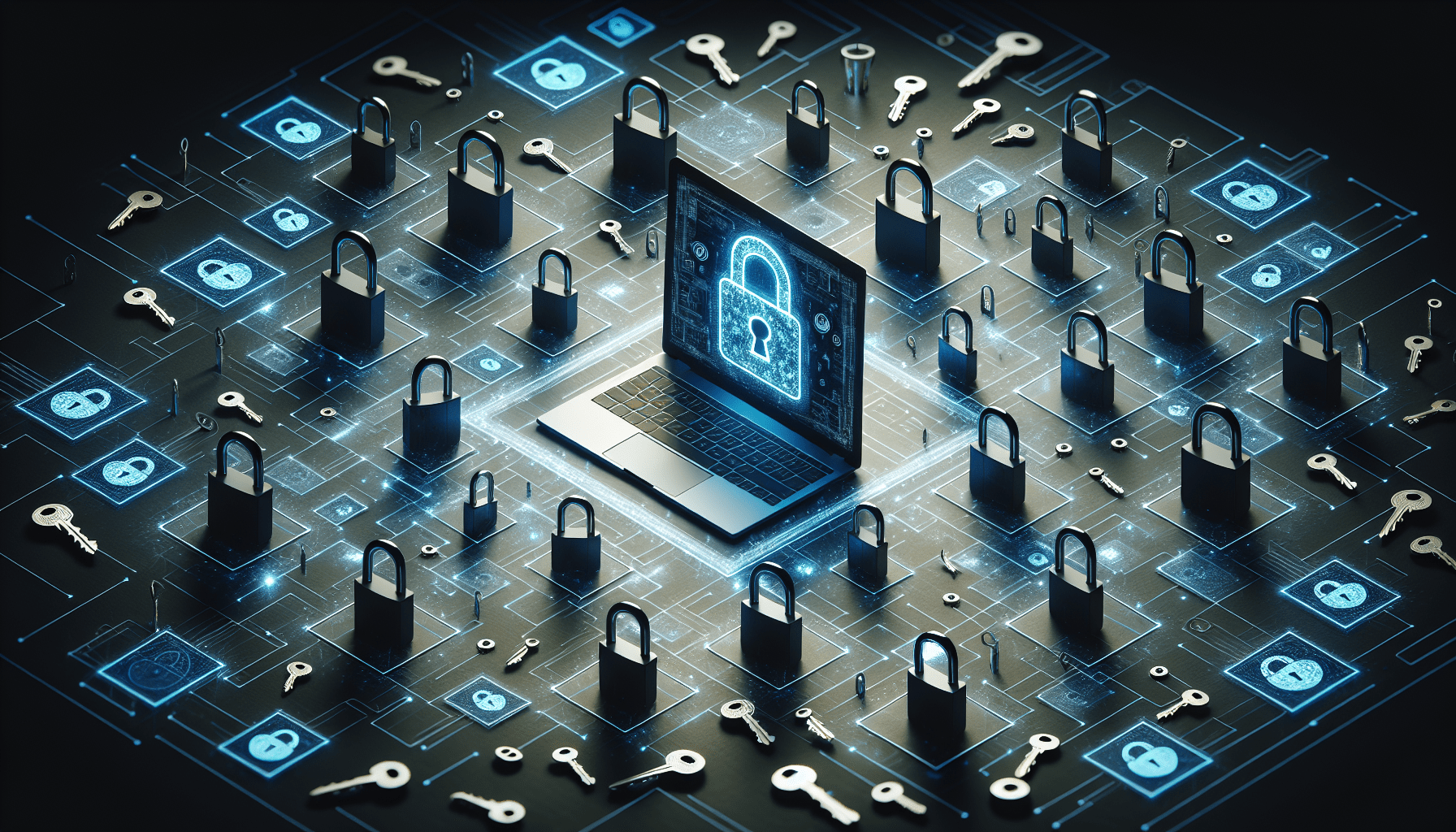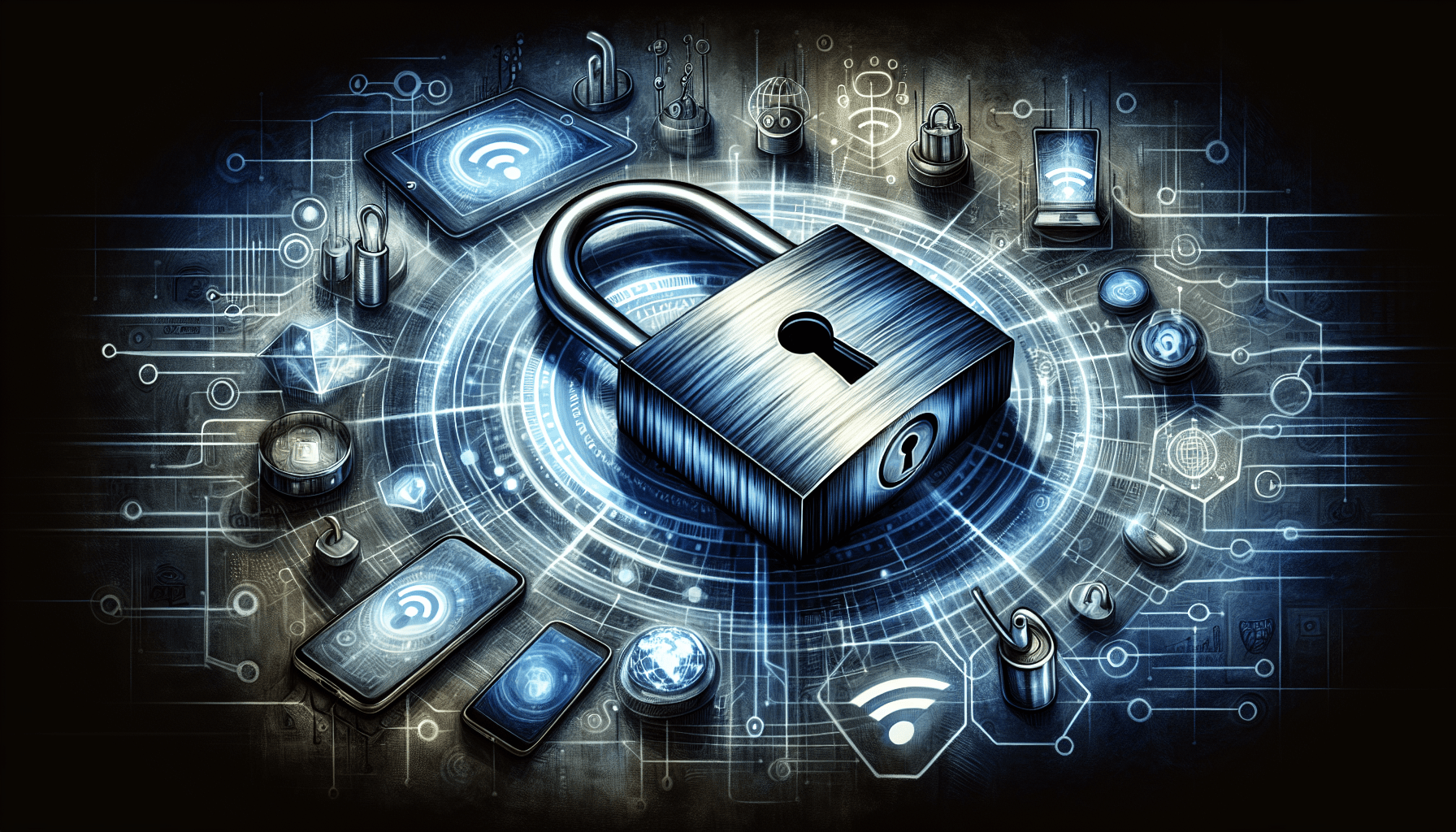In this article, you will delve into the world of personal cybersecurity auditing, a vital practice in today’s digital age. With technology becoming an integral part of our lives, safeguarding our personal information has never been more important. This article will explore the key aspects of personal cybersecurity auditing and provide valuable insights on how you can enhance your online security. So, fasten your seatbelts, because we are about to embark on a journey to strengthen your digital defenses and protect yourself from potential cyber threats.

Understanding Personal Cybersecurity Auditing
Personal Cybersecurity Auditing refers to the process of evaluating and assessing an individual’s personal digital security measures to identify potential vulnerabilities and strengthen overall cybersecurity. This involves conducting thorough assessments of the person’s cybersecurity infrastructure, physical security measures, online habits, and incident response plans. By understanding and implementing personal cybersecurity auditing, individuals can take proactive steps to protect their personal information and digital assets from cyber threats.
What is Personal Cybersecurity Auditing?
Personal Cybersecurity Auditing involves a comprehensive evaluation of an individual’s cybersecurity practices and measures. It goes beyond simply installing antivirus software or changing passwords regularly. It entails a holistic approach to identify and address vulnerabilities that cybercriminals can exploit. This process involves assessing network security, endpoint security, web application security, physical security measures, personal online habits, and incident response plans. By conducting a personal cybersecurity audit, individuals gain insights into their security posture and can make informed decisions to enhance their digital defenses.

Why is Personal Cybersecurity Auditing Important?
In today’s digital age, personal cybersecurity auditing is crucial to protect against increasingly sophisticated cyber threats. Cybercriminals are continuously evolving their tactics, making it essential for individuals to proactively strengthen their digital defenses. Personal cybersecurity auditing helps individuals understand their vulnerabilities and weaknesses, ensuring that they can implement necessary improvements to safeguard their personal information and assets. By conducting regular audits, individuals can mitigate cybersecurity risks and prevent potentially devastating consequences such as identity theft, financial loss, or reputational damage.
Benefits of Personal Cybersecurity Auditing
Personal Cybersecurity Auditing offers numerous benefits for individuals seeking to protect their digital lives. Firstly, it provides a clear understanding of the current security posture, enabling individuals to identify potential vulnerabilities and weak points. This empowers individuals to take corrective actions, thereby reducing the risk of cyber attacks. Secondly, conducting personal cybersecurity audits helps establish security goals, enabling individuals to prioritize their security enhancements and allocate appropriate resources. Lastly, personal cybersecurity auditing fosters a proactive approach to cybersecurity, ensuring individuals stay ahead of the ever-evolving threat landscape.

Preparing for a Personal Cybersecurity Audit
Before diving into a personal cybersecurity audit, it is crucial to adequately prepare. This involves assessing your current cybersecurity measures, identifying vulnerabilities and weak points, and establishing security goals.
Assessing Your Current Cybersecurity Measures
To begin the auditing process, you need to evaluate your existing cybersecurity measures. This includes considering the antivirus software, firewalls, and other security tools you have in place. Assess the reliability of these tools and determine whether they are up to date. Additionally, consider any security policies or guidelines you have implemented to mitigate risks.
Identifying Vulnerabilities and Weak Points
In order to strengthen your cybersecurity, you must identify any vulnerabilities and weak points in your digital defenses. This can be done by reviewing past cybersecurity incidents, conducting risk assessments, and analyzing potential entry points for cyber threats. By identifying these vulnerabilities, you can take proactive steps to address them during the audit.
Setting Security Goals
Setting clear security goals is a vital step in preparing for a personal cybersecurity audit. These goals should align with your unique needs and risk tolerance. For example, if you store highly sensitive personal information, your goal might be to implement multi-factor authentication for all your online accounts. By establishing security goals, you can focus your audit efforts and prioritize actions to enhance your overall cybersecurity posture.
Conducting a Personal Cybersecurity Audit
Once you have prepared adequately, it is time to conduct the actual personal cybersecurity audit. This involves researching best practices and frameworks, creating a checklist, and defining the audit scope.
Researching Best Practices and Frameworks
Before diving into the audit, it is beneficial to research and familiarize yourself with well-established cybersecurity best practices and frameworks. These resources can provide valuable guidance and act as a benchmark against which you can evaluate your own cybersecurity measures. Examples of popular best practices and frameworks include the NIST Cybersecurity Framework and ISO/IEC 27001.
Creating a Checklist
During the auditing process, it is helpful to have a checklist to ensure that no crucial steps are missed. The checklist should cover all areas of personal cybersecurity, including network security, endpoint security, web application security, physical security measures, personal online habits, and incident response plans. A comprehensive checklist ensures that the audit is thorough and systematic.
Defining Audit Scope
Defining the audit scope is essential to ensure that the audit is focused and manageable. Consider your goals and objectives, as well as the resources and timeframe available. Determine which aspects of your personal cybersecurity measures will be included in the audit and establish clear boundaries to avoid unnecessary overwhelm. Properly defining the audit scope helps maintain efficiency and ensures that the audit remains actionable.

Performing Technical Assessments
Technical assessments are a vital component of a personal cybersecurity audit. These assessments focus on evaluating network security, endpoint security, and web application security.
Network Security Assessment
Network security assessment involves evaluating the security of your home network or any other network you use regularly. This assessment entails reviewing the configuration of routers and firewalls, ensuring strong passwords are in place, and assessing the strength of encryption protocols. Additionally, you should scan for any unauthorized devices connected to the network and evaluate the effectiveness of your network monitoring tools.
Endpoint Security Assessment
Endpoint security refers to securing individual devices, such as computers and smartphones, that connect to your network. During an endpoint security assessment, you should review and update all installed software and operating systems to ensure they are up to date with the latest security patches. You should also assess the effectiveness of your antivirus software, anti-malware tools, and any other security measures that protect your endpoints.
Web Application Security Assessment
Web applications, such as online banking portals or email platforms, are often targeted by cybercriminals. A web application security assessment involves evaluating the security of the web applications you use regularly. You should analyze the strength of user authentication processes, check for any vulnerabilities in the code, and ensure that secure communication protocols, such as HTTPS, are enforced. Additionally, consider the permissions granted to these applications and limit access to sensitive information whenever possible.
Assessing Physical Security Measures
In addition to digital security measures, it is essential to assess the physical security measures protecting your devices and data.
Surveillance and Access Control Systems
Assessing surveillance and access control systems involves evaluating the security measures in place to protect your physical devices and premises. This can include security cameras, alarm systems, and entry control systems. Ensure that these systems are operational, properly configured, and regularly updated. Test their effectiveness by attempting authorized and unauthorized access to evaluate their response.
Data Storage and Backup
Data storage and backup are crucial aspects of personal cybersecurity. Assess the security measures in place for storing your data, such as encryption protocols and access controls. Additionally, review your data backup processes to ensure they are automated, regular, and stored in off-site locations to protect against physical threats like fires or theft.
Secure Physical Access Points
The physical access points to your devices and premises need adequate security measures. Assess doors, windows, and other entry points to ensure they have appropriate locks, reinforced frames, and any necessary security devices, such as entry alarms. Additionally, consider the need for secure storage for devices when they are not in use, such as lockable cabinets or safes.

Assessing Personal Online Habits
Personal online habits play a significant role in ensuring cybersecurity. Assessing and improving these habits can significantly enhance your overall security posture.
Password Management
Evaluate your password management practices, including the strength and uniqueness of your passwords. Consider using a reputable password manager to generate and securely store complex passwords for all your online accounts. Enable multi-factor authentication whenever possible to add an extra layer of security to your accounts.
Phishing and Social Engineering Awareness
Phishing and social engineering attacks are prevalent in today’s digital landscape. Assess your knowledge and awareness of these threats. Understand how to identify suspicious emails, links, or phone calls attempting to trick you into providing sensitive information. Stay updated on the latest phishing techniques and educate yourself on how to avoid falling victim to these scams.
Safe Browsing Practices
Assess your safe browsing practices to mitigate the risk of encountering malicious websites or downloading malicious files. Ensure that your web browser and other applications are up to date with the latest security patches. Be cautious when opening email attachments or clicking on unfamiliar links. Implementing ad-blockers and using a reputable virtual private network (VPN) can provide additional layers of protection while browsing the internet.
Reviewing Incident Response and Recovery Plans
No cybersecurity system is entirely foolproof, so it is essential to review and establish incident response and recovery plans.
Designing an Incident Response Plan
An incident response plan outlines the steps to be taken in the event of a cybersecurity incident. Review and update your incident response plan to ensure it aligns with current threats and technologies. Clearly define roles and responsibilities, establish communication channels, and determine escalation procedures. Create a detailed incident response playbook that guides you through the necessary actions to contain and recover from a cybersecurity incident.
Testing and Validating the Plan
A well-designed incident response plan is incomplete without testing and validation. Regularly conduct tabletop exercises to simulate various cybersecurity incidents and test the effectiveness of your plan. Identify any gaps or areas for improvement and refine your incident response processes accordingly. Validate the plan by involving key stakeholders and third-party experts who can provide valuable insights and help uncover potential blind spots.
Implementing Recovery Mechanisms
Recovering from a cybersecurity incident requires having appropriate mechanisms in place. Review and enhance your backup and disaster recovery strategies to minimize downtime and data loss in the event of an incident. Regularly test your backup and recovery processes to verify their effectiveness. Consider cloud-based backup solutions for added redundancy and faster recovery times.
Documenting Findings and Recommendations
Once the personal cybersecurity audit is complete, it is essential to document the findings and provide recommendations for improvement.
Compiling Audit Reports
Compile a comprehensive report that summarizes the findings of your personal cybersecurity audit. Organize the report in a clear and concise manner, ensuring that key areas of concern are highlighted. Include detailed information about vulnerabilities, weaknesses, and any potential risks identified during the audit process.
Identifying Key Findings
Identify and prioritize the key findings from the audit. These findings should represent areas that require immediate attention or improvements to enhance your overall cybersecurity posture. Focus on vulnerabilities or weaknesses with the highest potential impact or likelihood of being exploited by cybercriminals.
Providing Recommendations and Action Steps
Based on the key findings, provide clear and actionable recommendations to address identified vulnerabilities. Include step-by-step action plans, suggested timelines, and resource requirements. Tailor the recommendations to your specific needs and consider seeking professional advice when necessary.
Implementing and Monitoring Security Improvements
Implementing the recommended security improvements is a critical step to enhance personal cybersecurity. It is also important to continuously monitor and evaluate the effectiveness of your cybersecurity measures.
Prioritizing and Planning Security Enhancements
Prioritize the recommended security enhancements based on the potential impact and feasibility of implementation. Create a plan that outlines the necessary steps, assigns responsibilities, and sets achievable timelines. Consider utilizing project management tools or frameworks to track the progress of security enhancement initiatives.
Implementing Recommended Changes
Execute the planned security enhancements according to the established timeline. This may involve updating software, configuring new security tools, or implementing additional security measures. Carefully follow best practices and guidelines while making changes to ensure they are properly implemented and do not introduce new vulnerabilities.
Periodically Monitoring and Evaluating Cybersecurity Measures
Cybersecurity is an ongoing process, and it is crucial to continuously monitor and evaluate your cybersecurity measures. Implement regular security assessments to identify any new vulnerabilities or weaknesses that may have arisen since the previous audit. Stay updated with the latest cybersecurity trends and technologies, as these can introduce new risks or provide opportunities for improved security.
Staying Up-to-date with Cybersecurity Trends
To maintain a strong personal cybersecurity posture, it is essential to stay informed about the latest cybersecurity trends, techniques, and best practices.
Continuous Learning and Skill Development
Cybersecurity is a constantly evolving field, so continuous learning and skill development are essential. Stay updated with the latest industry certifications, training courses, and educational resources. Participate in online classes, webinars, or workshops to enhance your knowledge and skills. Engage in hands-on exercises or capture-the-flag competitions to practice real-world cybersecurity scenarios.
Subscribing to Relevant News Sources
Subscribe to reputable cybersecurity news sources and blogs to stay informed about emerging threats, data breaches, and best practices. These sources can provide valuable insights and keep you updated on the rapidly changing cybersecurity landscape. Regularly check for security updates from software vendors to ensure you have the latest patches and security fixes.
Participating in Cybersecurity Communities
Engage with cybersecurity communities, both online and offline, to exchange knowledge and learn from industry experts and peers. Join forums, online groups, or local cybersecurity meetups to share experiences, ask questions, and stay connected with the cybersecurity community. Networking with professionals in the field can provide valuable insights and help you stay aware of the latest trends and practices.
By understanding and implementing personal cybersecurity auditing, individuals can proactively protect their personal information and digital assets. It offers a comprehensive approach to evaluate and enhance cybersecurity measures, ensuring individuals can stay resilient against ever-evolving cyber threats. Remember, personal cybersecurity is a continuous effort, so make it a habit to regularly conduct audits, implement improvements, and stay informed about the latest cybersecurity trends.

